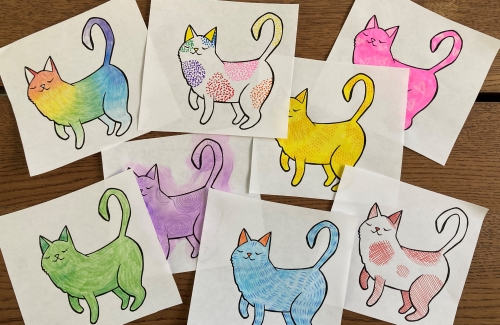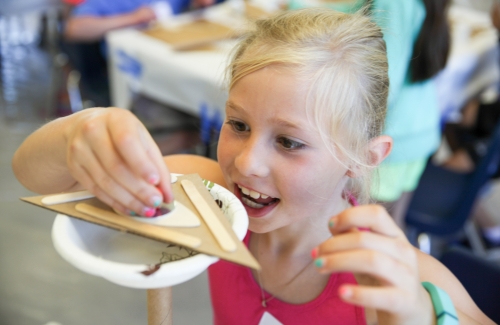Breaking Through Artists’ Block

You know the feeling: you sit down to tackle a creative project, only to find that you’re completely at a loss for how to begin. Whether you’re five or fifty-five, a creative block can strike any project, transforming something as simple as a coloring page into a seemingly insurmountable obstacle.
The next time you come to hit a creative wall, try one (or more!) of these brainstorming techniques from Galileo’s crack team of curriculum developers—the same techniques designers and innovators use in their work.
Why Brainstorming?
Getting good at brainstorming without judgment is essential for coming up with the best solutions.
In essence, brainstorming helps you generate lots and lots of ideas, pushing you past the very first thought that comes to mind and inevitably yielding something more interesting. Plus, when you make brainstorming fun, you release the pressure of the big question and just focus on getting the creative juices flowing, rather than judging each idea as you have it.
Mix and Match Brainstorming Techniques
Get your creative juices flowing with some wild mixing and matching.
Categories
Pick several categories. Consider options like color schemes, artistic techniques, patterns, mediums, things that aren’t coloring supplies, and things that move. Make lists for each, then pick items from two different lists to pair up. What combinations can you come up with? An all-fuschia frottage? Dancing polka dots?
Roll the dice
Tape letters to each side of a pair of dice. Roll die #1, then give yourself one minute to think of nouns that begin with the letter you rolled. Repeat with die #2, this time thinking of adjectives for the letter you rolled. Then put them together. For example, if #1 rolled a “C” and #2 rolled an “E,” you might come up with evil coffee, excited camel, or educated cat.
Think inside the box
Brainstorm a bunch of nouns and adjectives (or any other pair of categories. Write them on individual slips of paper and put them in two separate boxes or bags (one for nouns, one for adjectives). Draw a word from each box and put them together.
Look for Inspiration Everywhere
Anything at all can get your mind moving in fun new artistic directions. Creators of any age can:
- Browse through their bookshelves and thumb through magazines for illustrations or color combinations, creating a list of anything they get excited about.
- Ask what seems absolutely true about the task at hand, then invert that expectation. For example, what if a coloring sheet wasn’t limited to two dimensions? How could they make it stand up (and stand out)?
- Search Google images using the ideas that came out of the brainstorms above to see what additional concepts pop up.
Create with Confidence
Once you’ve exhausted every brainstorming technique, it’s time to narrow down your excellent ideas. Don’t worry about picking a favorite right away! First, simply go through the list and cross off any ideas you’re a bit less excited about. Once you’re done, you’ll have a shortlist to pick a favorite from.
If you’re still having trouble picking just one idea from the shorter list, try adding a few constraints. For example, you might review your list with an eye for eliminating what you don’t have the materials for, then the ones you don’t have enough time to execute and so on. Soon, you’ll have removed enough to make it clear which idea is a cut above the rest.

 Coloring Techniques for Artists of All Ages
Coloring Techniques for Artists of All Ages  Our Favorite DIY Activities for Kids
Our Favorite DIY Activities for Kids  11 Virtual Field Trips You Can Take From Home
11 Virtual Field Trips You Can Take From Home 